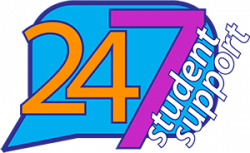Hello, and welcome back to our asynchronous workshop series, How to Design a Successful Innovation Grant.
The series began in September, and it will end in March 2022, the same month Innovation Grant proposals are due to the Virginia Western Educational Foundation.
If you’re just now joining us, and you intend to submit an application this year, then I would advise you block out some significant time to catch up! It’s still possible!
Let’s review some of our Lab Lessons so far, including:
#1: Grant proposals are not time wasted … even if you FAIL
#2: Know the rules of the game
#3: Focus on NEEDS first, solutions second
#5 Relationships are the secret sauce
So that brings us to Lab Lesson #7: Assume success.
This may seem like a small thing, but one of the tips I learned about writing strong grant proposals was to use confident language.
Instead of writing:
“For this project, I hope to …” or
“If funded, we plan to …”
Write as if you WILL be funded. “We will do XYZ, and this how.”
If you’ve followed all the steps in this series, really thinking through the key questions and doing the homework, then you SHOULD be confident with your proposal.
Assume it will be successful.
So this means thinking a few steps ahead.
Do you remember those Thinking Cap questions way back in September?
I asked you to consider your fledgling ideas through the perspective of the grant reviewers.
For Innovation Grants, that means the ultimate decision makers will be members of the Educational Foundation’s Scholarships & Grants Committee.
Most of these members are representatives from the business community, so they will be evaluating your proposal through that lens.
Let’s revisit some of the questions I’ve heard them ask before:
- How original is the idea? Is this project innovative?
- What is the potential impact for the college?
- Is the project sustainable?
- Is this a good investment?
How would you answer those questions? Have you discussed the sustainability of your idea with your dean or supervisor? In other words, how will the project be maintained after the grant funding is over?
The committee will be looking for answers to those questions in your proposal, so don’t worry about having to address them during a live meeting.
Since we’re assuming success, I will also introduce you to the Grants Management Handbook. This is the resource project managers use once their grant is funded to ensure they follow college policies and procedures. You can find a PDF of the most updated handbook on the grants office web page.
So what’s next?
We will return on March 2, when we wrap up the final details and finally submit the proposal!
Let’s look at our progress so far:
| March | Finish line: Proposal ready to submit! Huzzah! |
Here’s your homework checklist to help stay on track:
By the end of February:
- Refine your application draft … aim for 80% complete by the end of February.
- What conversations are missing? Is you supervisor looped in? Have you checked with HR about release time? What about IET for any questions about technology?
You can do this!






 Shelley Lyons is glad to be back on campus as she is a Virginia Western alum, and has served as the Administrative Officer for Grants Administration at Virginia Western since early 2022. Prior to VWCC, her career focus was within the Human Services and Arts fields. She wrote her first grant in 1996 on a whim and has continued to plan and learn since that time. She most enjoys seeing a well-planned project come to fruition, where funder, project manager and beneficiaries can all feel success and see impact.
Shelley Lyons is glad to be back on campus as she is a Virginia Western alum, and has served as the Administrative Officer for Grants Administration at Virginia Western since early 2022. Prior to VWCC, her career focus was within the Human Services and Arts fields. She wrote her first grant in 1996 on a whim and has continued to plan and learn since that time. She most enjoys seeing a well-planned project come to fruition, where funder, project manager and beneficiaries can all feel success and see impact.